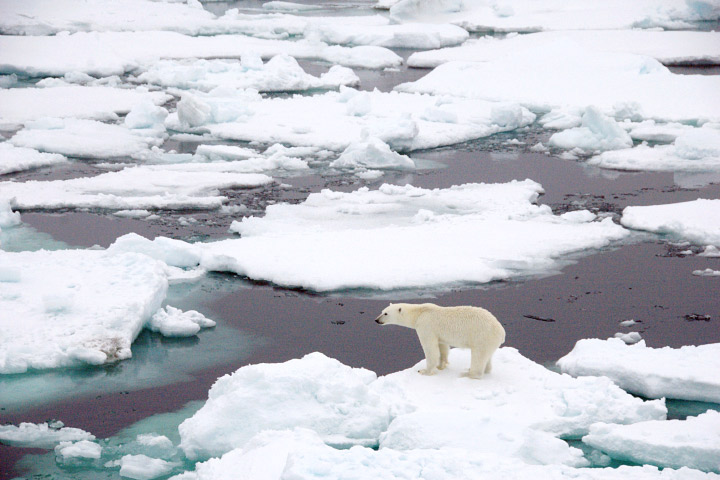The Arctic is undeniably one of the harshest environments on the planet. It’s home to vast, ice-covered land devoid of any greenery.
Even with the right tools, survival here hinges on resourcefulness, resilience, and, quite often, luck.
The story of Bruce Gordon’s Arctic adventure encompasses all three of these elements.


Bruce’s tale involves being shipwrecked, fighting for survival, and forming an unusual bond with a polar bear cub that he named Nancy.
The story is so unusual that many people don’t believe it to be true; they assume it’s folklore or, at best, an exaggerated version of Bruce’s real-life events.
This is the remarkable story of Bruce Gordon, his miraculous survival against the odds, and his extraordinary bond with Nancy the polar bear.
Bruce Gordon’s Battle for Survival in the Arctic
Scotsman Bruce Gordon’s survival story begins with disaster, as most tales of survival do. Bruce’s fight for his life took place in the Arctic, one of the world’s harshest environments.
As the legend goes, in 1757, the seasoned sailor was aboard a whaling ship navigating the bitter northern waters when tragedy struck.
Early on in the trip, the ship was smashed irreparably due to treacherous ice floes, leaving him in the freezing wilderness with no hope of immediate rescue.
Allegedly, the captain was regularly drunk and, on the night of the devastating crash, had been once again sampling the ship’s liquor stash.

Aside from Bruce, nobody aboard the ship, which was named Anne Forbes, survived the brutal collision.
Bruce was forced to adapt quickly to survive with nothing but the clothes on his back and a Bible in his pocket. Faced with freezing temperatures, cutting winds, and the constant threat of starvation, all he had to rely on was his instincts.
By a stroke of good fortune, the day after the ship was wrecked, it resurfaced and became embedded, upside down, on the ice. On board was ample food, beverages, and survival tools.
The whaling ship had been due to be out at sea for months, and the supplies were still just about fully stocked.
Although Bruce was in a dire situation, the ship’s resurfacing was beyond lucky. It gave him the sustenance he needed to survive the next challenge: dealing with the hungry polar bears that lived nearby.
He’d already seen some of the bears eating his shipmates. He knew his upturned ship would attract the bears as they hunted for food.
He fortified the ship as best he could, and since it was firmly stuck in the ice, he was sure it wasn’t going anywhere.
It only took a few days before he encountered his first polar bear, who had made her way into his living space through a hole in the side of the ship.
Armed with just a carving knife, he eliminated the polar bear, not realizing she was the mother to a young cub trailing behind her.
Upon taking the life of the polar bear, the cub entered Bruce’s living space, but he spared her after taking pity on the orphaned baby.
Knowing the cub wouldn’t survive on its own—it had yet to learn to hunt and fend for itself—he decided to take the baby bear as his pet.
It wasn’t just guilt that made Bruce decide to take care of the cub: he decided the animal, who was not yet a threat to him, could be a good companion.
Bruce named the little bear Nancy after a girlfriend from his hometown of Aberdeen.
Together, they survived the harsh terrain and bleak surroundings of the Arctic. While teaching Nancy how to catch her own food, he fed her whale blubber and fish, and she eventually learned to hunt for herself.
She would then share her food with Bruce, as he had with her when she was very young.
Years passed, and Nancy matured into an adult, likely weighing up to 700 pounds, and eventually towered over her human companion.
This meant Bruce had his very own protector. She would shield him from the other bears, who she shunned in favor of a life with Bruce.
After six years together, the giant sheet of ice they were on began to drift away, eventually heading toward Greenland. Here, for the first time in years, Bruce was greeted by another human, dozens of them, in fact.
A group of natives spotted the man and his pet polar bear and offered them a place to stay.
The villagers welcomed Nancy just as much as they did Bruce, and for a few months, the pair were happy living among the Inuit people. However, Nancy was getting bored.
Female polar bears often have their first litter of cubs at five or six years old, and Nancy was coming up to seven.
So, she headed back to the wilderness to live in the wild among her kind. She never returned to the village, and so Bruce decided to make plans of his own.
This proved difficult, however. He didn’t have a ship to travel back to Scotland on, and even if he did, he didn’t have enough resources to last the whole journey home.
He could not contact anyone for help; the villagers he lived with could only offer shelter and companionship, not a ticket back home.
Then, by a stroke of luck, a ship named “Briel of Amsterdam” was passing and noticed the Scotsman, who stood out like a sore thumb among the natives. They welcomed him onto their ship and brought him to England.
After seven years in The Arctic, Bruce was finally home and had an extraordinary tale to tell his friends and family.
But was it truthful?
Nancy the Polar Bear: Was She Fact or Folklore?
The tale of Bruce Gordon’s alleged survival in the Arctic was met with awe and fascination.
His local community lauded him for his saga of bravery and adventure, and though most people believed him at the time, as years went by, many became skeptical of his claims.
Some believe Bruce’s story of survival was plausible until the inclusion of Nancy, which they deemed too far-fetched. Others suggest that Bruce simply couldn’t have survived alone in the Arctic, so Nancy must have been real.
Those who believed Bruce’s story argued that he wouldn’t have ever made it more than a few months stranded in the Arctic without Nancy’s protection. After all, he would have been no match for the hungry bears that lived nearby.
Those who think Bruce fabricated this tale suggest a polar bear, no matter how young, wouldn’t align itself with a human, particularly one who had just slain her mother.
Perhaps Bruce wanted a good story to return home with and thus made up the existence of Nancy. Or, perhaps Nancy was a figment of his imagination, allowing him to believe he had a fierce protector by his side when, in reality, he was stranded on the ice sheet alone.
Then, there’s the fact that this event took place in 1757; people may have amended and added to the tale as time passed, perhaps making it more fiction than fact.
While there is no solid proof of Nancy’s existence, at least in the way Bruce told the story, his tales of Arctic adventure have inspired books on the fascinating story.

One notable publication is “The Iceberg Hermit,” a young adult adventure novel released in 1974 and written by Arthur J. Roth.
This fictionalized tale has striking similarities to Bruce’s survival journey.
The Iceberg Hermit tells the story of Scotsman Allan Gordon, a sailor who survives a shipwreck in the Arctic during the 1700s.
Stranded on an iceberg and battling the oppressive Arctic temperatures, Allan is forced to rely on his wits and brawn to stay alive. In the book, Allan befriends a polar bear after killing her mother.
The book focuses on the relationship between a man and a wild animal and the remarkable bond that saw human and bear help one another survive in their time of need.
Then, when the time comes, the pair part ways, just like Bruce and Nancy did.
Bruce Gordon’s legacy, be it true, fabricated, or somewhere in between, is still undeniably filled with wonder.
Sources
https://bushcraftbuddy.com/bruce-gordon-7-years-living-with-a-polar-bear













Leave a comment